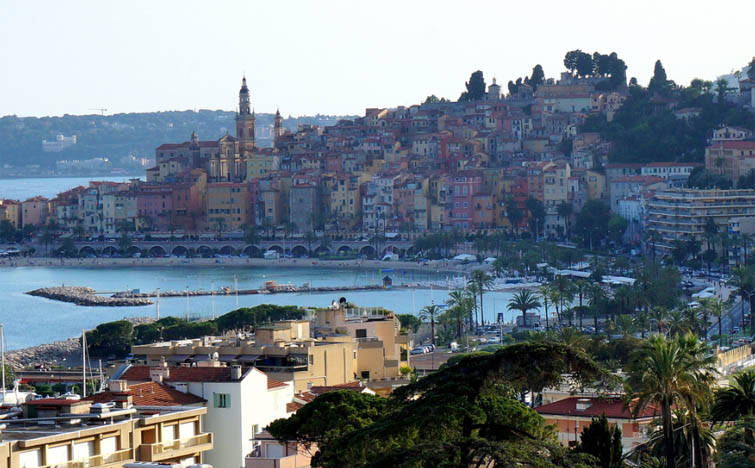Touring the French Riviera With Matisse
The French Riviera was a sanctuary and source of inspiration for many artists in the first half of the 20th century. Seduced by its light, and also its good climate and the magic of the Mediterranean, they succumbed to its charm. One of these was Henri Matisse, who arrived in Nice in 1917 seeking a cure for his bronchitis and remained there until his death in 1954. It was in Nice that he found the peace of mind and the light that would accompany him throughout his mature art period. He also used to visit other artists in the area who, like him, had moved their studio to this spot on the calm waters of the Mediterranean, whether in Nice itself or in neighbouring villages. Here, then, is a tour which retraces the footsteps of that fantastic artist of the Côte d’Azur.
Nice
Roman in origin and the region’s nerve centre, you would be hard pressed not to be enthralled by the charms of Nice. It is a pleasure in itself to just stroll along the streets in the old quarter in search of the Cours Saleya, a bustling square and site of both the popular flower market and the fruit and vegetable market. If you also take the chance to taste some of the local culinary specialities in one of the magnificent eateries in the area, a rewarding experience is guaranteed. Above all, make sure you try socca, a grilled chickpea-flour pasty, the perfect snack for a long sightseeing day.
The Promenade des Anglais is another of Nice’s popular landmarks. This elegant seaside promenade with its stylish period hotels and iconic palm trees inevitably transports you to a bygone era, a time when the first tourists started to frequent the city.
Matisse eventually took up permanent residence and set up his studio in the classy, aristocratic Cimiez Quarter after trying out other areas in the city. This quarter is home to the Matisse Museum, housed in a 17th-century villa, where visitors can delight in the artworks donated to the city by both Matisse himself and his heirs. Nearby is the Hotel Regina, where he actually lived during much of his stay in Nice. And, not far from there is the spot where he was buried, the cemetery of the Monastery Of Our Lady Of Cimiez.
Saint-Paul-de-Vence
This medieval village overlooking the Mediterranean is possibly one of the most picturesque in France, with the permission of Mont Saint Michel and Vézelay. Perched on a hilltop and ringed by a fortified wall, it preserves all the charm of the period when it was built. When strolling through its streets lined with old stone houses, it becomes clear how Matisse must have been captivated by its magic. But, he was not alone in falling prey to its allure, as so too did Picasso, Chagall, Renoir, Miró, Yves Montand and Cocteau. The passage of so many artists through the village led to a good number of art galleries springing up in its narrow streets. The finishing touch to any visit here is provided by the Maeght Foundation which houses one of the finest collections of 20th-century art, that of Marguerite and Aimé Maeght. The building, which was designed by the Spanish architect, Josep Lluís Sert, houses works by Pierre Bonnard, Henri Matisse, Georges Braque, Fernand Léger, Alberto Giacometti, Marc Chagall, Alexander Calder, Joan Miró, Wassily Kandinsky and Raoul Ubac, among others.
Vence
Matisse arrived in Vence in 1941, during one of the worst moments of World War II. Apart from sanctuary, he was seeking a place to heal, as he was ill. It was here that he found the right spot to recuperate, as well as inspiration. His stay in this small town yielded the creation of the Chapel of the Rosary, also known as the “Matisse Chapel”, where the artist once stated: “Despite all its imperfections, I regard this as my masterpiece”. Here, Matisse took charge of the whole project as he designed the building, the stained glass windows, the wall decoration, the furniture and even the liturgical accoutrements.
Cagnes-sur-Mer
Auguste Renoir spent the last few years of his life in this coastal town. He settled in the villa known as Les Collettes, now converted into the Renoir Museum, where Matisse visited him on several occasions and learned from the Impressionist master how to perceive the colours of the “Midi”. Among the standout features of this small town on the French Riviera is Haut-de-Cagnes, a quarter listed as a historic interest site, where the most prominent landmark is Grimaldi Castle.
As Matisse said: “Most people come here for the light. Being from the north, what attracted me were the radiant colours and the luminosity of daylight”. Now it’s your turn to discover it, so get your Vueling and let yourself be inspired.
Text by Los Viajes de ISABELYLUIS
Images by Irene Grassi, r.g-s, m-louis .®, piet theisohn, Jumilla
more info
Tenerife, Cadiz, Venice... let’s go to the carnival!
Europe’s most popular carnivals are a great excuse to get away in February. Where do you fancy going? Cadiz, Tenerife, Venice, Basel...
more infoShopping in Ventimiglia
By Michael Shuermann from Easy Hiker
I still remember the first time we came into contact with Ventimiglia market – without even knowing that such a thing existed. We were boarding the local train from Nice to Menton, eastwards down the coast of the French Riviera in the direction of the Italian border. We were amazed to find it packed to the rafters at around 11 am on a Friday. From other trips on that line, we had been used to having a choice of seats on a weekday morning, but on that day, it seemed as though the entire population of the Cote d’Azur was on the move.
We did not find out until much later what was going on, but all these crowds were going to the Italian border town of Ventimiglia – the last stop on that line – for the popular weekly Friday street market.
The market mainly offers clothes, handbags and other leather goods – of mixed quality, it must be said, but occasionally, you can find well-crafted products at large discounts.
One of the market’s attractions apparently has something to do with the fact that – whisper it – the Italian police is less strict than its French counterpart in pursuing brand counterfeiters, so the French customs occasionally stop people on their way back from the market, asking them where they bought their shiny and new “Louis Vuitton handbag”. Be forwarned.
The market also features a section where farmers offer domestic food products. You can buy specialties from all over Italy here – Calabrian sausages, Parmesan cheese, olive oil – but also local produce such as sun-dried tomatoes and home-made pesto sauce, one of the things for which the province of Liguria (which includes Ventimiglia) is famous.
Have a coffee in one of the many charming little coffee houses around the 1930s municipio, the City Hall. You are only 15 km away from the French border town of Menton, but you will already feel a marked difference in the general liveliness (and noise levels) of the street life.
On market days, there is also a particularly large number of ambulant traders around who are walking from cafe to cafe peddling key chains that glow in the dark, small novelty household items and the like.
We have gone shopping many times at Ventimiglia market, and often, what we have bought from the peddlers turned out to be our most unforgettable purchases. What would our lives have been without the cicada fridge magnet that starts to sing when somebody approaches it?
You can reach Ventimiglia conveniently by local train (TER) from Nice. Trains leave frequently, generally every 30 minutes throughout the day. Don’t forget to bring a valid ID!
By Michael Shuermann from Easy Hiker
Why not take a trip to Nice? Have a look at our flights here!
more info
What is online check-in? All you need to know
Online check-in means checking in on the internet. Have you heard about it? We're sure that from now on you'll always remember to do it before you fly.
more info




